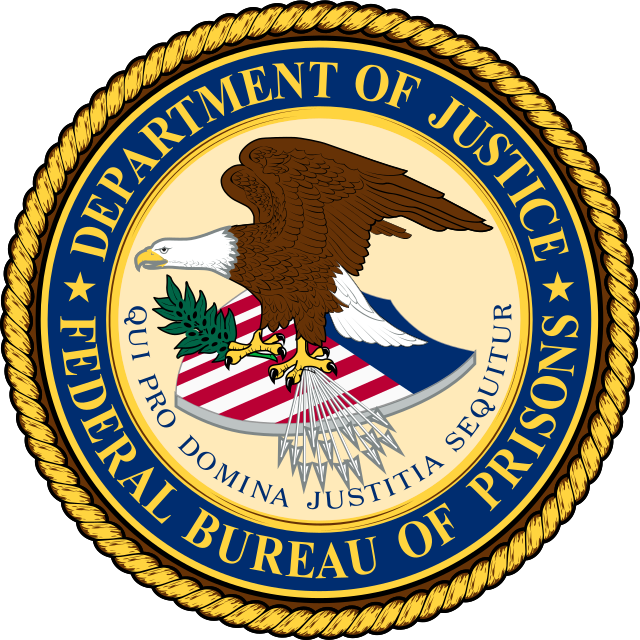Top Qs
Timeline
Chat
Perspective
List of United States federal prisons
From Wikipedia, the free encyclopedia
Remove ads
The Federal Bureau of Prisons classifies prisons into seven categories:
- United States penitentiaries
- Federal correctional institutions
- Private correctional institutions
- Federal prison camps
- Administrative facilities
- Federal correctional complexes[1]
- Former Federal facilities

This list does not include military prisons, halfway houses, or prisons, jails, and other facilities operated by state or local governments that contract with the Federal Bureau of Prisons. It also does not include facilities operated by Immigration and Customs Enforcement (ICE).[2]
Remove ads
United States penitentiaries
Summarize
Perspective
Most United States penitentiaries (USPs) are high-security facilities, which have highly secured perimeters with walls or reinforced fences, multiple and single-occupant cell housing, the highest staff-to-inmate ratio, and close control of inmate movement. The most restrictive facility in the federal prison system is USP Florence ADMAX, the federal supermax prison, which holds inmates who are considered the most dangerous and in need of the tightest controls.
USP Leavenworth, USP Lewisburg, USP Lompoc, and USP Marion were originally operated as high-security facilities but have since been downgraded to medium-security facilities (former USP Lompoc has again been downgraded, to low-security). USP Atlanta, also a former high-security facility, is presently a low-security facility with the primary purpose of holding inmates until they are transferred to other institutions. In 2024, all former USP facilities were renamed to FCI facilities to more accurately reflect their security level. Many current USPs include minimum-security satellite camps on the same property and under the same administration as the higher-security units.
Remove ads
Federal correctional institutions
Summarize
Perspective
Federal correctional institutions (FCIs) are medium- and low-security facilities, which have strengthened perimeters (often double fences with electronic detection systems), mostly cell-type housing, a wide variety of work and treatment programs. FCI Terre Haute contains a more restrictive section designated as a communication management unit for inmates considered high-security risks.[1] FCI Marion contains one of two highly restrictive communication management units, which holds inmates under stricter controls.
Remove ads
Federal prison camps
Summarize
Perspective
Federal prison camps (FPCs) are minimum-security facilities, which have dormitory housing, a relatively low staff-to-inmate ratio, and limited or no perimeter fencing. These institutions are work- and program-oriented. Many are located adjacent to larger institutions or on military bases, where inmates help serve the labor needs of the larger institution or base.[1]
Private correctional institutions
Summarize
Perspective
In August 2016, Justice Department officials announced that the FBOP would be phasing out its use of contracted facilities, on the grounds that private prisons provide less safe and less effective services with no substantial cost savings.[104] However, under the Trump administration in 2017, the Justice Department rescinded this phaseout, stating that it would re-implement its usage of private correctional facilities.[105]
Most of these institutions are operated by the GEO Group, Inc., the exception being McRae Correctional Institution, operated by CoreCivic.
Remove ads
Administrative facilities
Summarize
Perspective
Administrative facilities are institutions with special missions, such as the detention of pretrial offenders; the treatment of inmates with serious or chronic medical problems; or the containment of extremely dangerous, violent, or escape-prone inmates. Administrative facilities include metropolitan correctional centers (MCCs), metropolitan detention centers (MDCs), federal detention centers (FDCs), federal medical centers (FMCs), the Federal Transfer Center (FTC), and the Medical Center for Federal Prisoners (MCFP), all of which are capable of holding inmates in all security categories.[1]
Federal Detention Facilities
Federal Medical Centers
Federal Transfer Centers
Remove ads
Former federal facilities
This list enumerates facilities that were formerly owned by the Federal Bureau of Prisons.
Remove ads
See also
References
Wikiwand - on
Seamless Wikipedia browsing. On steroids.
Remove ads
